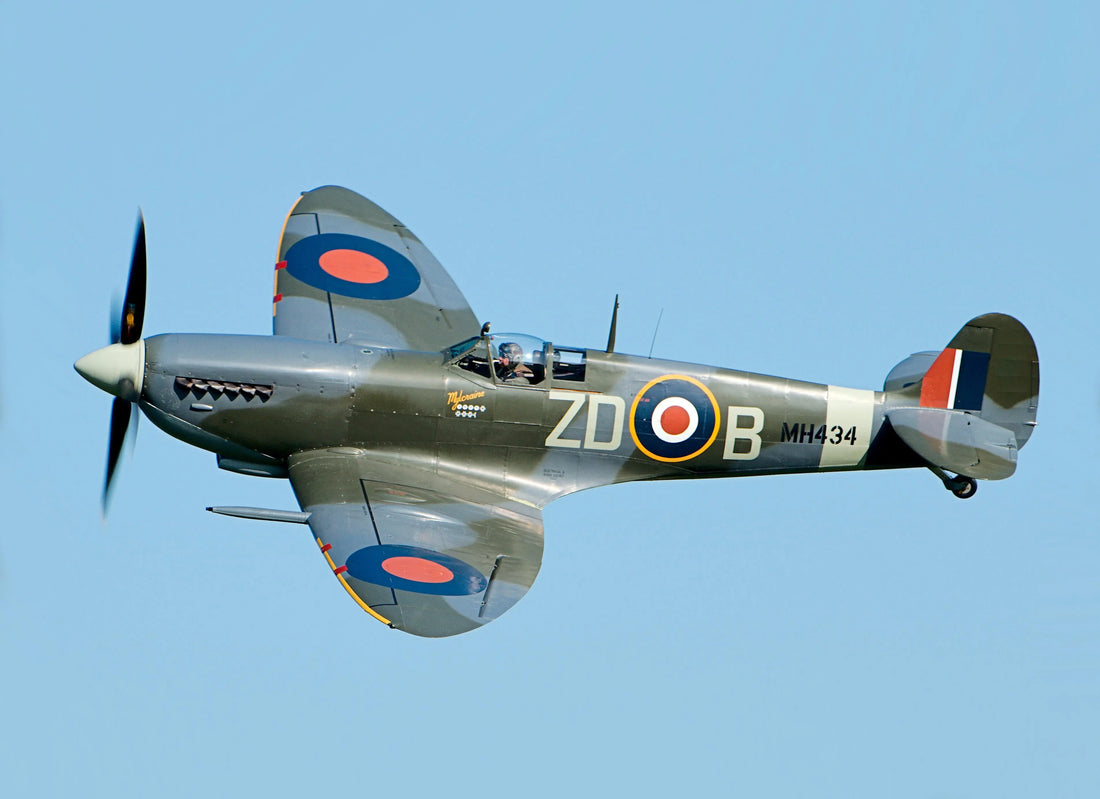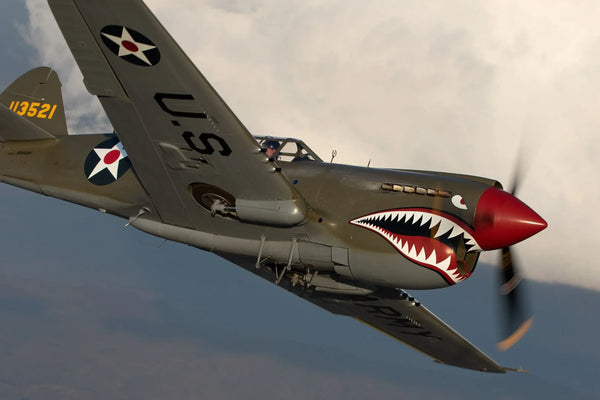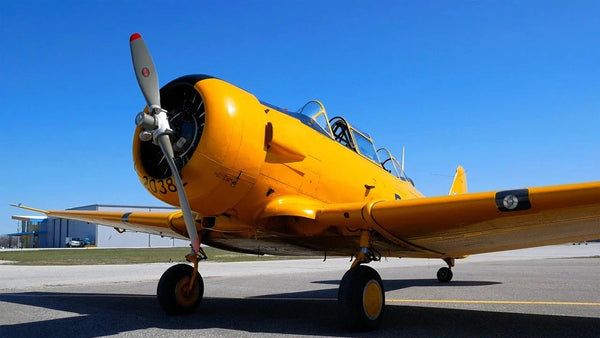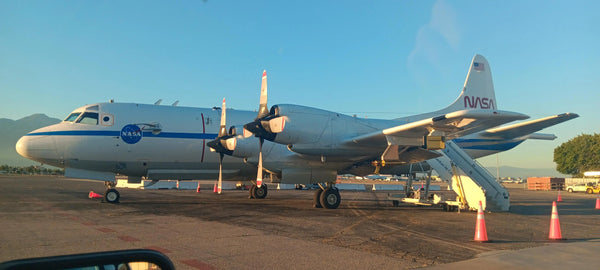The Roar That Defined an Era
The year is 1940. Above the patchwork fields of southern England, the silence is suddenly broken by a deep, resonant sound—a sound that is not merely noise, but a promise. It is the distinctive howl of a Rolls-Royce engine powering an aircraft of almost impossibly elegant design. This is the Supermarine Spitfire, the machine that would become the physical embodiment of British determination and ingenuity during the Second World War. More than just a highly advanced weapon system, the Spitfire was a graceful fusion of engineering brilliance and human courage, an art form that took to the skies, and in doing so, definitively changed the course of world history. To fully appreciate its impact is to delve deep into the Supermarine Spitfire history, tracing its evolution from a drawing-board vision to the savior of a nation. It is impossible to discuss the strategic defense of the island nation without immediately referencing the Supermarine Spitfire World War II efforts; this aircraft was, without hyperbole, the most crucial British fighter aircraft WWII deployed in the defense of the realm. Its story is one of innovation born from desperation, culminating in a legend forged in the heat of battle.
The Birth of a Legend: R. J. Mitchell and His Vision
The birth of this legend began, not in a flurry of wartime activity, but in the quiet, focused mind of one man: Reginald Joseph Mitchell. At the Supermarine Aviation Works in the 1930s, Mitchell, an engineer already celebrated for his record-breaking Schneider Trophy seaplanes, set about answering a challenging Air Ministry specification. His initial designs were considered too radical by many, particularly his groundbreaking approach to aerodynamics. The Spitfire’s distinctive shape was no accident of aesthetic design; its form was dictated entirely by function. Mitchell’s stroke of genius was the Spitfire elliptical wing design, a technically complex shape that minimized induced drag, offering a superior combination of speed and low-speed handling—an unparalleled advantage in a dogfight. Yet, this jewel of the RAF was almost overlooked. The simpler, easier-to-mass-produce Hurricane initially garnered more favor, but those within the Ministry with a keen eye for cutting-edge performance recognized the potential in Mitchell’s sleek creation. Tragically, the genius who designed the plane would not live to see its greatest triumphs. R. J. Mitchell Spitfire designer battled cancer while perfecting the aircraft’s blueprints, pouring his final reserves of energy into the project before his passing in 1937. His determination, a profoundly human story of perseverance against personal adversity, is forever linked to the aircraft’s final, perfect form. Its remarkable performance characteristics, outlined in its initial Spitfire aircraft specifications, promised a machine capable of outflying almost anything the Axis powers could deploy.

The Heart of the Machine: The Rolls-Royce Merlin Engine
The true heart of the Spitfire’s performance lay in its engine: the legendary Rolls-Royce Merlin engine. To the pilots, its sound was a deep, resonant thrumming that was often described as "music that meant home." This 12-cylinder, liquid-cooled, V-engine was a masterpiece of piston-engine technology, producing over 1,000 horsepower in the early models and significantly more in later variants. Its reliability and power output were game-changers, providing the Spitfire with the speed and spectacular rate of climb it needed to intercept enemy formations quickly. The development of the Merlin was continuous, a relentless pursuit of more power. Later in the war, the larger, even more potent Rolls-Royce Griffon engine was introduced, particularly for the high-altitude and late-war variants, ensuring the Spitfire remained an iconic WWII fighter aircraft with competitive performance right up until the jet age arrived. The engine’s evolution was the key to the aircraft’s longevity, a testament to British manufacturing's ability to constantly upgrade and adapt. Without the roaring power and dependable performance of the Merlin and its successors, the sleek airframe would have been little more than a beautiful sculpture; with it, the Spitfire became a deadly, dynamic aerial weapon system.
Battle-Tested Brilliance: The Spitfire in Action
The true test of the aircraft’s mettle arrived in the summer and autumn of 1940 during the Battle of Britain. The skies over England became the theater for history's first truly decisive air campaign. Here, in a desperate struggle for survival, the Battle of Britain Spitfire was pitched directly against the formidable German Messerschmitt Bf 109. The narratives emerging from the cockpit paint a vivid, cinematic picture of the chaos and heroism of those days—the sun glinting off the aircraft, the cold terror and white-hot focus of the pilots, and the rattle of machine gun fire. While the Bf 109 was faster at high altitudes, the Spitfire possessed superior agility, especially in tight, turning dogfights, a direct benefit of Mitchell’s elliptical wing design. Its visibility from the cockpit, particularly in the later bubble-canopy versions, was also superior, a small but critical edge for the RAF Spitfire pilots who needed to keep their "six" clear. The Spitfire’s armament of eight Browning .303 machine guns (later upgraded to cannons) provided the necessary punch. The aerial duels between the Spitfire vs Messerschmitt Bf 109 defined the battle, and though the German fighter was a remarkable machine, the combination of the Spitfire's turning radius, the Merlin’s reliable power, and the unflinching courage of the pilots ultimately secured victory. The Spitfire became a tangible symbol of resistance, fueling the national morale that underpinned Britain’s ability to stand alone against the threat of invasion.

A Design That Stood the Test of Time
The brilliance of the Spitfire’s design lay not just in its initial performance, but in its adaptability—a necessary trait for any machine expected to serve throughout a six-year global conflict. Beyond its core function as a high-altitude interceptor, the aircraft was constantly modified and improved for a dizzying array of roles. The inherent aerodynamic efficiency derived from the Spitfire elliptical wing design meant the platform could handle changes in engine power and armament with grace. Its versatility allowed for the development of specialized variants. For naval operations, the Seafire—the Spitfire Seafire naval version—was developed, equipped with an arrestor hook and strengthened undercarriage for carrier landings, bringing the Spitfire's superior performance to the fleet air arm. Additionally, models stripped of armament, fitted with extra fuel tanks and high-resolution cameras, became the Spitfire reconnaissance aircraft, flying dangerous missions deep over enemy territory to gather vital intelligence at high speeds. This continuous evolution ensured that the initial Spitfire aircraft specifications were merely a starting point. The aircraft’s core design principles—high lift, low drag, and a focus on pilot handling—would even influence the design of Britain’s first generation of jet fighters, carrying the lineage forward into the postwar era.

The Human Element: Pilots Behind the Legend
No story of the aircraft is complete without shining a light on the human element—the RAF Spitfire pilots who strapped themselves into the cramped cockpit, risking everything with every takeoff. Flying the aircraft was, by all accounts, an immersive and highly responsive experience. Pilots consistently described the Spitfire as intuitive and responsive, saying it felt like "wearing wings"—a natural extension of their own will. This intimate connection between man and machine bred a fiercely loyal affection for the fighter. One of the most famous human stories tied to the aircraft is the Douglas Bader Spitfire story. A famous flying ace who had lost both his legs in a pre-war flying accident, Bader returned to operational flying during the war, piloting his Spitfire with prosthetic legs. His resilience, skill, and sheer defiance of physical limitations made him a national hero, embodying the "never give up" spirit that the Spitfire itself represented. The aircraft was their sanctuary in the sky, a tool of precision that demanded skill but returned confidence. The raw courage of these young men, supported by the tireless work of ground crews who kept the complex machines operational, is forever interwoven with the aluminum skin and the deafening roar of the Spitfire.

A Legacy That Still Soars
Today, the echo of that roar has never truly faded. The Spitfire restoration and preservation movement is a global passion, resulting in dozens of airworthy examples that are meticulously maintained. These magnificent machines now star as Spitfire airshow planes, their classic lines and throaty Merlin engines drawing vast crowds of onlookers who seek a tangible link to history. The aircraft’s enduring cultural presence is equally strong; the Spitfire in films and culture has cemented its image as the quintessential WWII fighter, a symbol of freedom, resistance, and grace under pressure. Its clean lines and heroic wartime narrative have made it an icon far beyond aviation circles. The Spitfire legacy and symbolism endure not merely as a celebration of a successful war machine, but as a tribute to the period of unity and purpose it represents. To watch a restored example cut a lonely, elegant figure against a sunset sky is to witness the spirit of a nation taking flight, a timeless reminder of human creativity and courage when pressed to its absolute limit. The Supermarine Spitfire history is a powerful saga that continues to inspire.

Honoring the Spirit of Flight
The Supermarine Spitfire stands as a timeless icon, a masterpiece of aerodynamic elegance that was born from one man's relentless vision and upheld by the courage of countless young pilots. It is a powerful reminder that the finest achievements often emerge from the greatest challenges, fusing human creativity and engineering genius. For those who feel the pull of that history, who appreciate the craftsmanship that saved a nation, there is a way to bring a piece of this extraordinary heritage home.
Elevate Your Office or Hangar
The Spitfire’s legacy is etched not just in the sky, but in the annals of incredible human endeavor. Honor this definitive piece of aviation history: explore our exclusive collection of hand-crafted Supermarine Spitfire wooden models at Premium Wood Art. Each model captures the perfect elliptical wing and unique silhouette, serving as a permanent tribute to the artistry and unwavering spirit of the "fighter that won the hearts of a nation.".
✈️ Explore Our Spitfire Wooden Models



